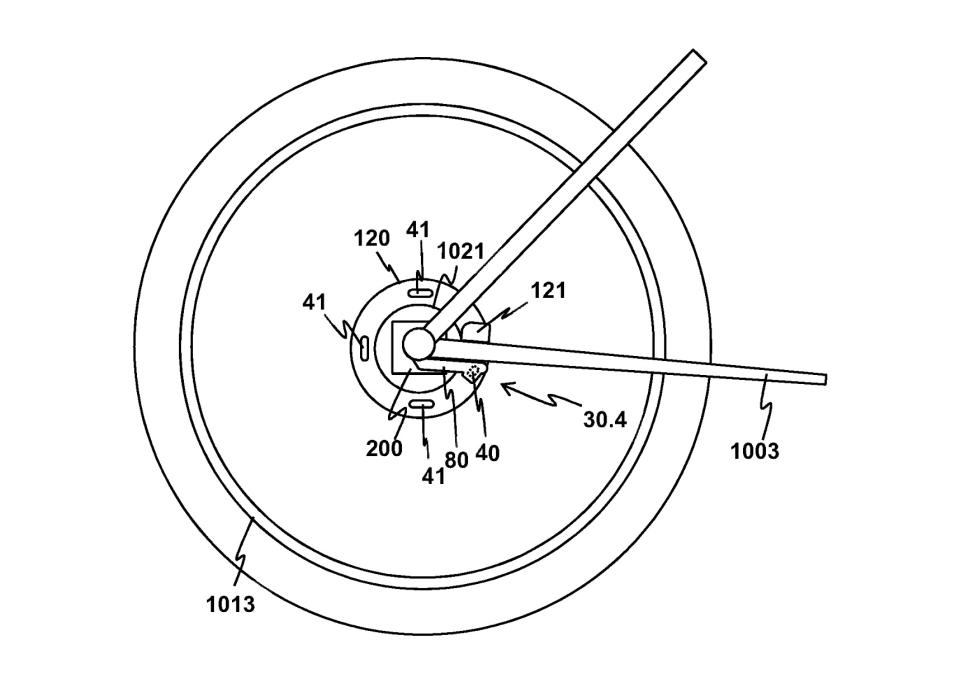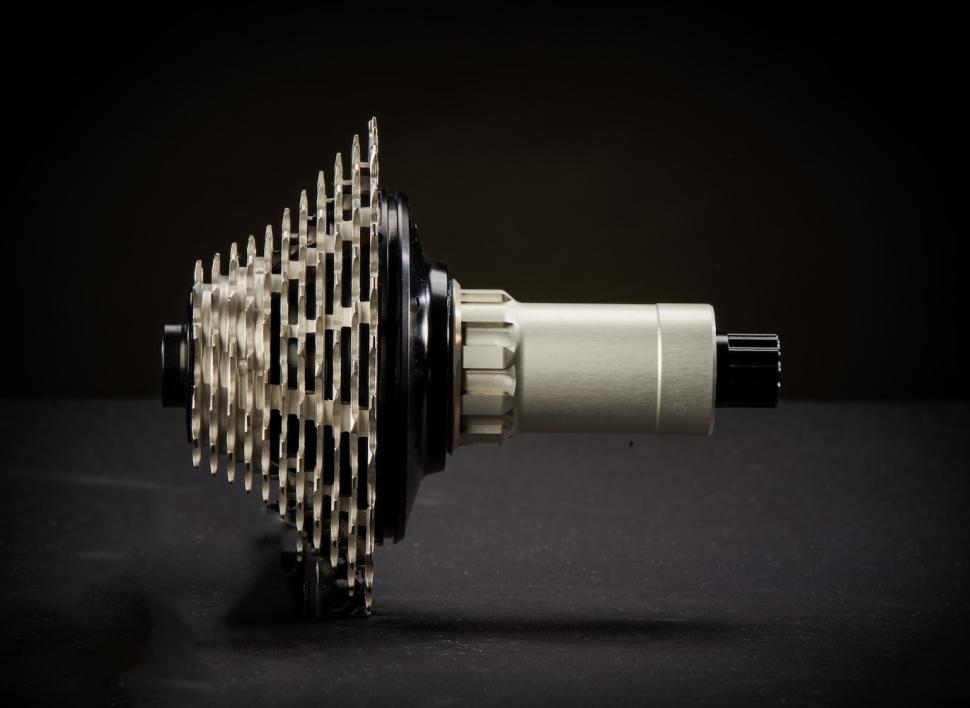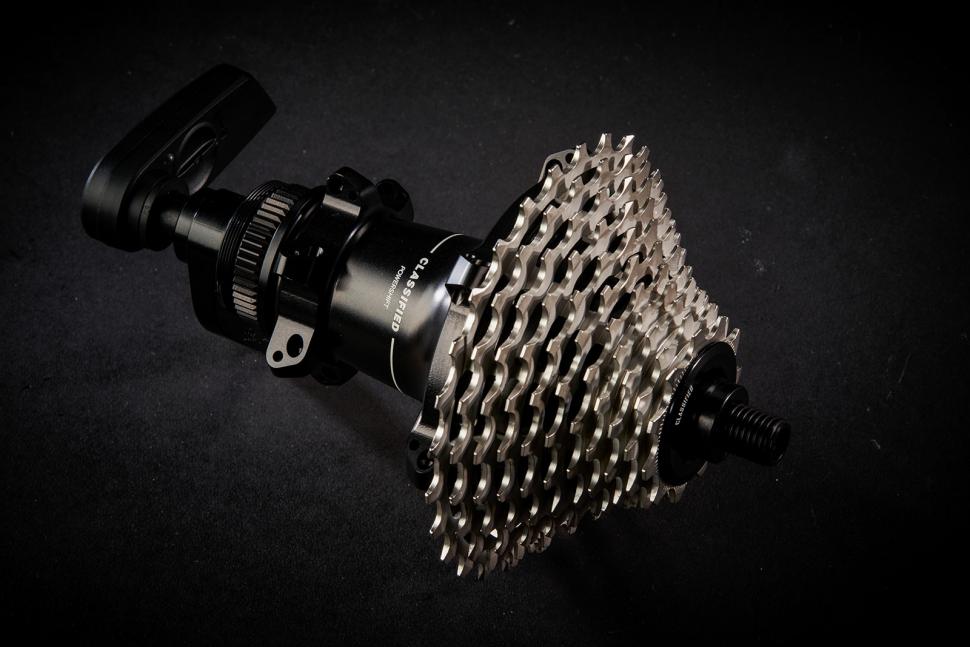- News
- Reviews
- Bikes
- Accessories
- Accessories - misc
- Computer mounts
- Bags
- Bar ends
- Bike bags & cases
- Bottle cages
- Bottles
- Cameras
- Car racks
- Child seats
- Computers
- Glasses
- GPS units
- Helmets
- Lights - front
- Lights - rear
- Lights - sets
- Locks
- Mirrors
- Mudguards
- Racks
- Pumps & CO2 inflators
- Puncture kits
- Reflectives
- Smart watches
- Stands and racks
- Trailers
- Clothing
- Components
- Bar tape & grips
- Bottom brackets
- Brake & gear cables
- Brake & STI levers
- Brake pads & spares
- Brakes
- Cassettes & freewheels
- Chains
- Chainsets & chainrings
- Derailleurs - front
- Derailleurs - rear
- Forks
- Gear levers & shifters
- Groupsets
- Handlebars & extensions
- Headsets
- Hubs
- Inner tubes
- Pedals
- Quick releases & skewers
- Saddles
- Seatposts
- Stems
- Wheels
- Tyres
- Health, fitness and nutrition
- Tools and workshop
- Miscellaneous
- Cross country mountain bikes
- Tubeless valves
- Buyers Guides
- Features
- Forum
- Recommends
- Podcast
TECH NEWS
 2025 patent Classified - 2
2025 patent Classified - 2Electronic braking? Probably not, but shifting that recharges as you ride could be on the way
A patent application by Classified Cycling describes the possibility of a shift system that recharges automatically as you ride – so you’ll never find yourself out of power and stuck in one gear – and also covers the prospect of bringing electronic braking to cycling, which is something that might fill you with dread.
We’re always poring over patents for clues as to what tech might be coming our way soon, but we didn’t spot this one first, it was reported in Velo.
Before we start, it’s worth saying that just because something is included in a patent, that doesn’t mean it’s necessarily work in progress. Classified might be pressing forward with these plans. Equally, it might not. It could have had an idea for a product that it thought was worth protecting, just in case. Part of Classified’s patent application for a ‘self-powered system for a bicycle’ does seem to be at least within the realms of possibility, though.
First, we’re all up to speed on Classified Cycling, right? It’s a Belgian component brand that’s best known for its Powershift hub. This is a two-speed internal geared hub that does away with the need for a front derailleur. You still use a cassette and a rear derailleur, but everything else is hidden away inside that rear hub. The idea is to offer quick shifting with improved aerodynamics and the reduced likelihood of dropping the chain. Powershift is a wireless electronic system that needs to be recharged from time to time.
> Read our review of the Classified Powershift Kit & Wheelset
Classified’s patent application (US 2025/0042495 A1, if you fancy a bit of light reading; treat yourself) describes a system that contains “an energy harvesting unit configured for harvesting energy and supplying the harvested energy to… one or more electronic actuators.”
Let’s hear it for harvesting.
Yeah, patent applications are always written in that kind of language. You get page after page of this stuff. Essentially, the system includes an ‘energy storage device’ – or a rechargeable battery, to you and I. There could be more than one.
Rather than plugging the rechargeable battery into the mains when it needs topping up, it’s attached to that “energy harvesting unit”. Where does this energy come from?
“Energy can be harvested from various components of the bicycle and/or from its environment,” says Classified.
Such as?
This being a patent application, it takes about a week to get to the point, but we’re eventually told that we’re talking about converting kinetic energy, solar and/or thermal energy into electric energy.
We’re all familiar with solar-powered components – such as the Garmin Edge 840 Solar, for example – and Classified reasons that “cycles are most often used outdoors during the day, hence solar energy may be a convenient energy source to be harvested by the energy harvesting unit, also when the bicycle is stationary”. But how is Classified going to convert kinetic energy to electrical energy? This is what a dynamo system does, so it’s by no means a new concept in the world of cycling.
Essentially, Classified says that it could include a stator (the stationary part of a generator) mounted to a non-rotary component of the bike (Classified gives various possibilities, including mounted to, or integrated with, a thru-axle used to fix a wheel to a bicycle frame).
The electric generator would have “a rotor… mounted to a rotary component of the bicycle” – such as spokes or a brake disc on the wheel – and magnets attached to these would induce the stator. Classified discusses various other possibilities for harvesting kinetic energy and sites for solar cells, but you get the idea; the battery recharges as you ride.
As mentioned, the patent application focuses mostly on gear shifting, but Classified says, “Additional electronic sensors and actuators can be provided for various other functionalities, such as electronic brake actuators and electronic power sensors.”
Electronic brake actuators? Really?.
“Optionally, the system comprises an electronic brake sensor configured for transmitting an electronic brake signal upon sensing a user actuation thereof and an electronic brake actuator configured for receiving the electronic brake signal and actuating a brake action upon receipt of the electronic signal.”
Oh, crikey! We’re back to speaking in Patentese. In other words, you’d brake electronically. Classified also says that damper adjustment and seatpost height actuation could be handled similarly.
It must be said, though, that it feels as if Classified is simply covering as many possibilities as possible with these additions. That’s standard practice in patent applications – you fence off as much territory as you can, and claim it as your own. None of the pictures in the patent relate to braking, suggesting that it's low on the agenda.
With that in mind, we’d say that the chances of electronic braking coming to a bicycle near you anytime soon are distinctly limited, although electronic shifting that’ll never leave you out of charge… well, that one might just have legs.
Mat has been in cycling media since 1996, on titles including BikeRadar, Total Bike, Total Mountain Bike, What Mountain Bike and Mountain Biking UK, and he has been editor of 220 Triathlon and Cycling Plus. Mat has been road.cc technical editor for over a decade, testing bikes, fettling the latest kit, and trying out the most up-to-the-minute clothing. He has won his category in Ironman UK 70.3 and finished on the podium in both marathons he has run. Mat is a Cambridge graduate who did a post-grad in magazine journalism, and he is a winner of the Cycling Media Award for Specialist Online Writer. Now over 50, he's riding road and gravel bikes most days for fun and fitness rather than training for competitions.
Latest Comments
- Jem PT 18 min 51 sec ago
I had often thought that freewheeling energy might be able to be harvested to recharge something electrical on a bike, if not the bike itself. But...
- chrisonabike 1 hour 9 min ago
Sorry the old bicycle was stolen. It should be pretty distinctive if it comes to light e.g. on the net....
- Secret_squirrel 1 hour 35 min ago
Whilst I agree with most of the outrage in the comments - the fact remains that when taken against the average this is a pretty strong sentence,...
- chrisonabike 1 hour 37 min ago
Are they least acceptable when unlicenced or unlicensed though?
- KDee 1 hour 52 min ago
Here in NL a lot of the bike shops use a ceiling mounted hoist to lift bikes rather than workstands. Not surprising, some bikes like the transport...
- chrisonabike 2 hours 13 min ago
Well the entry-level requirement of their job is that they persuade everyone * they're great. Or at least better than the other options......
- matthewn5 2 hours 38 min ago
Mmmm, that quality of finish
- David9694 2 hours 42 min ago
Fresh calls for relief road after lorry hits George Inn in Leeds...
- matthewn5 2 hours 47 min ago
No 11 speed double crankset? Or am I missing something?
- David9694 2 hours 54 min ago
Police advise against councillors attending public meeting...




Add new comment
1 comments
I had often thought that freewheeling energy might be able to be harvested to recharge something electrical on a bike, if not the bike itself. But talking to someone far cleverer than me last year who was involved in e-bike development, his response was the weight of any recharging unit outweighed any potential gain. Which makes sense.